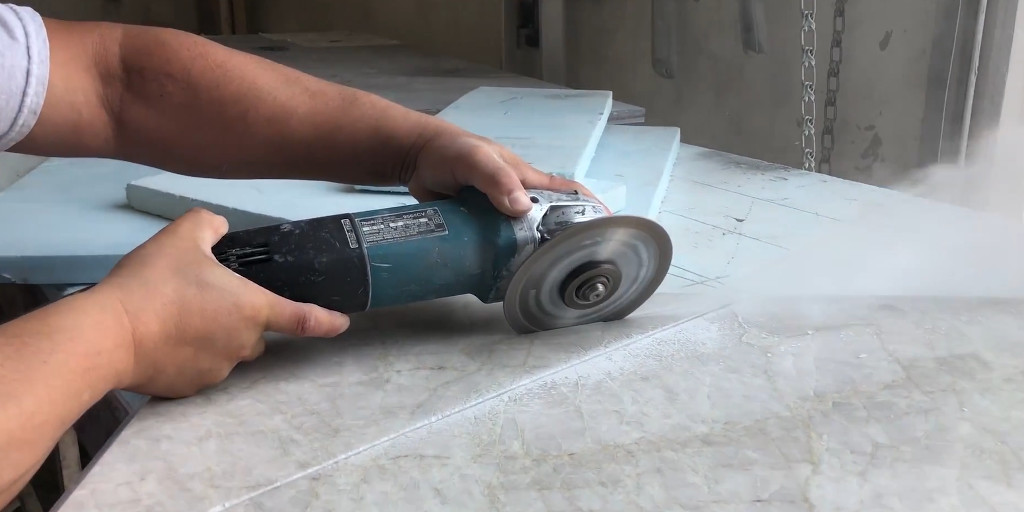Porcelain Dust Collection Equipment
One of the newer options for kitchen countertops is porcelain. It offers a number of benefits including ease of cleaning and no need for sealer applications. But what about cutting and shaping porcelain? Does porcelain dust need to be controlled? In this post we will explore porcelain dust and discuss a bit about how porcelain relates to industrial dust collection standards.
What is Porcelain?
The most basic question we need to consider is, “what is porcelain?” Getting the answer to that question helps us to consider our topic for discussion. The Countertop Specialty website makes the following statement regarding the composition of porcelain:
Essentially, porcelain is made from clay — but not just any type of clay. The clay used to create porcelain is often called China clay, and it contains a high percentage of a mineral known as kaolinite along with silica, feldspar and other mineral oxides which together are responsible for the strength and durability of porcelain.
The noteworthy part of that quote is the part that says silica is one of the minerals in porcelain. This means that occupations that cut, grind, and sand porcelain will generate dust that contains silica. If you have browsed around this website, you will have no doubt run across information about respirable crystalline silica; which we’ll come back to in just a moment.
Occupations Using Porcelain
Even though we will pretty much focus on porcelain countertops in this post, it is worth noting that there are many professions that generate porcelain dust. Some of these include:
- Hardscapers
- Landscapers
- Tile Installers
- Dentists
- Countertop Fabricators
All of the above professionals perform actions that generate dust from porcelain. For example, tile installers cut porcelain tile. This produces porcelain dust is generated. Or what about a fabricator cutting out the sink holes in a countertop? Again, porcelain dust is generated. There are many other examples we could look at but the point is that any time porcelain is cut, sanded, drilled, or shaped, there will be dust particles in the air.
Is Working With Porcelain Dangerous?
The generation of porcelain dust in specific industries is pertinent to our discussion because it means that consideration needs to be given to what kinds of substances are in the dust and whether porcelain dust is dangerous.
Exposure to Porcelain Dust
Since porcelain contains silica, it means that exposure to porcelain dust is basically exposure to silica. Furthermore, there are standards for controlling dust that contains respirable srystalline silica. But how dust exposure occur?
Silica exposure occurs in basic ways, each of which involves breathing it in. One way is by working the tools that cut, sand, grind, or drill porcelain. Workers remove material from products. Dust fills the air. Then, anyone not wearing proper protective equipment breathes the dust.
Another potential method of exposure is when non-workers (e.g. customers, salespersons, or maintenance technicians) simply pass through the area with the airborn particulates. Even if the dust is not visible to the naked eye, it can still contain silica. Certain levels of exposure can cause problems.
Health Effects of Porcelain Dust Collection
As a vehicle for silica, porcelain can lead to health problems. In fact, a number of diseases are associated with silica. As a result, the following diseases can come from repeated exposure to dust:
- COPD
- Chronic Bronchitis
- Tuberculosis
- Lung Cancer
The risks associated with exposure to porcelain dust make it important to know about and follow the OSHA standards for respirable crystalline silica. Protecting workers from the risks means developing practices that allow for porcelain dust collection and control of porcelain dust.
OSHA Guidelines for Dust Exposure
All sorts of factors exist that can impact the degree of risk. For example, the the type of material being worked plays a role. Additionally, the tools being used and the environment in which the work is being performed matter.
Safety measures for the most part include the dust collection methods and control procedures implemented by a particular company. And often times, porcelain work makes use of multiple control and collection methods.
In the end, working with porcelain involves paying attention to standards for safety in the work environment and operating shops that fabricate porcelain material in a way that keeps the facility safe. By doing so, each establishment provides a work environment that is conducive to the best health for its professionals.
Porcelain Dust Collectors

